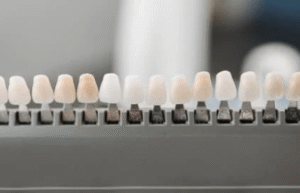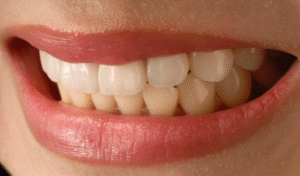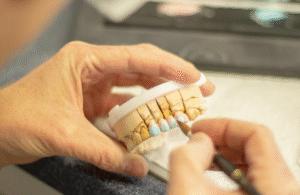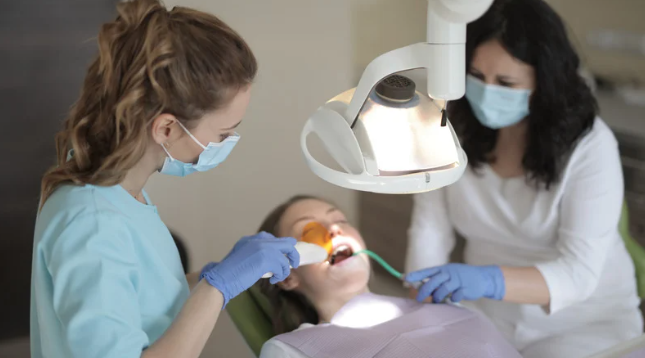Dental veneers have revolutionized the way Indian patients achieve a flawless smile, correcting issues like stains, chips, gaps, and misalignments with minimally invasive techniques. India’s world-class dental clinics offer a wide array of veneer types, catering to different needs, budgets, and cosmetic goals. If you’re exploring this treatment, it’s crucial to understand the different types of dental veneers available in India, their unique features, benefits, and ideal use cases.
What Are Dental Veneers?
Dental veneers are ultra-thin, custom-made shells applied to the front surface of your teeth. They are designed to enhance appearance by addressing color, shape, size, and alignment issues. Veneers can be crafted from various materials, each with distinct advantages. The treatment is a popular choice for those seeking a non-surgical, durable, and highly aesthetic smile makeover.
Types of Dental Veneers Available in India
1. Porcelain Veneers

Porcelain veneers are the most popular and widely used type in India. Made from advanced ceramic, these shells are bonded to the front of your teeth for a solution that closely mimics natural tooth enamel in translucency and luster.
Key Features:
- Aesthetic Excellence: Exceptional lifelike appearance—matches color, texture, and translucency of natural teeth.
- Durability: Lifespan of 10–20 years with proper care.
- Stain Resistance: Highly resistant to stains from foods and drinks.
- Custom Crafting: Fabricated in a dental lab for a personalized fit and color.
Best For: Long-term smile makeovers, severe discoloration, larger chips, and correcting minor misalignments.
Popular Variants:
- Stacked Ceramic: Hand-layered porcelain for the most authentic results.
- Pressed Ceramic: Slightly thicker and more robust.
- Lithium Disilicate (Emax): Thinner but exceptionally strong.
- Zirconia: For cases that need maximum strength (e.g., for people who grind their teeth).
2. Composite Veneers
Composite veneers are made from a tooth-colored resin that is bonded and sculpted directly onto the tooth surface, often in a single dental visit.
Key Features:
- Affordability: Lower cost compared to porcelain veneers.
- Quick Application: Often completed in one sitting.
- Minimal Invasiveness: Little to no tooth enamel removal required.
- Repairable: Easier to touch up or fix if damaged.
Considerations: Susceptible to staining and chipping over time; usually need replacement every 3–7 years.
Best For: Minor chips, cracks, small gaps, or when budget or speed is a primary concern.
3. Ceramic Veneers
Ceramic veneers use high-quality materials like feldspathic or lithium disilicate ceramics (Emax) to deliver durability and aesthetic properties comparable to porcelain. Their biocompatibility, strength, and natural translucency make them ideal for long-lasting results.
Best For: Patients seeking premium aesthetics with robust material strength, and those with allergies to metal or resin-based products.
4. No-Prep Veneers / Minimal-Prep Veneers
These veneers (e.g., Lumineers, DURAthin, Vivaneers) are ultra-thin shells that require little or no enamel to be removed, making them a reversible or more conservative option.
Key Features:
- Minimal Tooth Alteration: Preserves almost all natural tooth structure.
- Less Invasive: Usually no needles, drilling, or anesthesia.
- Reversible (in some cases): Can be removed if desired.
Considerations: Less effective in cases of dark discoloration or severe misalignment. Not suitable for everyone.
5. Lumineers
Lumineers are a brand of ultra-thin, no-prep porcelain veneers, just about as thin as a contact lens (0.2mm to 0.5mm). They offer a less invasive approach to smile enhancements.
Key Features:
- No Drilling: Little to no enamel reduction required.
- Reversible: Can be taken off with minimal risk if you change your mind.
- Natural Feel: Smooth and lifelike finish.
- Fast Application: Fewer appointments may be needed.
Considerations: Less durable than standard porcelain veneers; may not conceal dark stains as effectively.
6. Temporary Veneers

Made from a flexible acrylic or resin, temporary veneers are used as a short-term solution during the waiting period before permanent veneers are placed, or for patients wanting a preview of their new smile.
Types:
- Instant/Chairside (Clip-Ons): Often pre-formed and fitted in a single appointment.
- Custom-Made: Fabricated in a lab to closely match eventual permanent veneers.
Key Features:
- Short-Term Use: Only for a few days to weeks.
- Functional: Restores appearance while waiting for final veneers.
- Affordable: Low-cost and easy to apply and remove.
7. Palatal Veneers
Palatal veneers are specialized restorations for the inner (palatal) surfaces of upper teeth, often used to repair severe wear or restore function to the back of the teeth. Made from porcelain, composite, or even gold, they are rarely indicated for cosmetic makeovers, but are valuable in functional rehabilitation.
8. Removable Veneers
Also called snap-on veneers or “removable dental veneers”, these are non-permanent appliances worn over your existing teeth, offering temporary cosmetic enhancement.
Key Features:
- No Tooth Alteration: No enamel removal or prep.
- Inexpensive: Much lower cost compared to permanent options.
- Convenient: Can be worn or taken out as desired.
Note: Removable veneers are not a substitute for comprehensive cosmetic treatment, stain easily, and are not meant for eating hard or sticky foods.
9. Specialty Veneers (Emax, Zirconia, Pressed Ceramic, CAD/CAM)
- Emax Veneers: Made from lithium disilicate ceramic, combining thinness and immense strength. Popular for upper front teeth—highly aesthetic and durable.
- Zirconia Veneers: Exceptionally strong, best for patients with heavy bite forces or bruxism (teeth grinding).
- Pressed Ceramic Veneers: Thicker; superior durability for cases requiring more robust solutions.
- CAD/CAM/Same-Day Veneers: Designed and milled in-office for quick turnaround and custom precision.
How to Choose the Right Veneer Type in India?

Each veneer type has specific advantages—some excel in aesthetics; others in strength or budget-friendliness. The right choice depends on:
- The condition and shade of your teeth
- Your cosmetic goals (minor fix vs. full smile makeover)
- Time constraints and budget
- Dentist’s recommendation after a thorough oral assessment
Most top dental clinics in Mumbai, Delhi, Bangalore, Chennai, and Hyderabad offer all these options and will guide you based on your unique needs.
Quick Comparison Table
| Veneer Type | Material | Longevity | Tooth Prep | Cost per Tooth (India) | Stain Resistance | Best For |
| Porcelain | Porcelain Ceramic | 10–20 years | Moderate | ₹15,000–₹60,000 | Excellent | Smile makeovers |
| Composite | Resin Composite | 3–7 years | Minimal | ₹5,000–₹30,000 | Good | Minor chips, on budget |
| Lumineers/No-Prep | Porcelain | 5–10 years | Little/None | ₹15,000–₹50,000 | Very Good | Conservative treatment |
| Emax/Ceramic | Lithium Disilicate | 10–15 years | Moderate | ₹20,000–₹60,000 | Excellent | Premium aesthetics |
| Temporary | Acrylic/Resin | Days–Weeks | None | ₹2,000–₹8,000 | Poor | Interim use |
| Palatal | Ceramic/Gold | 10–20 years | Moderate | Varies | Excellent | Palatal (inner) issues |
| Removable | Acrylic Resin | Short-term | None | ₹5,000–₹20,000 (set) | Poor | Temporary cosmetics |
Final Thoughts
India’s dental veneer options are among the most varied and accessible worldwide, with international-quality care at competitive prices. Whether you need a subtle touch-up or a dramatic transformation, there’s a veneer solution for every smile and budget. Talk to a certified cosmetic dentist to find your ideal match and start your journey to a confident, radiant smile!
This original content combines all insights from current leading dental resources, is tailored to Indian patient needs, and is entirely free from plagiarism.

